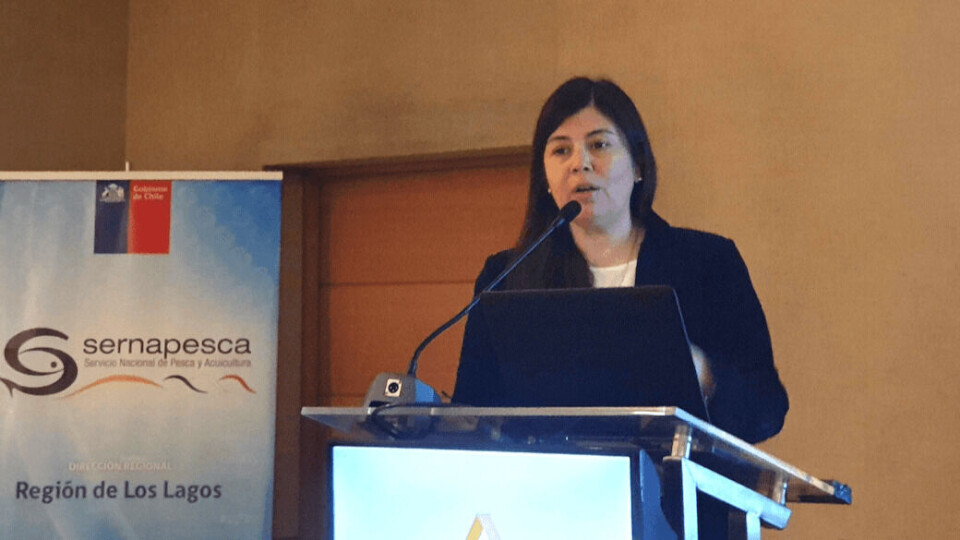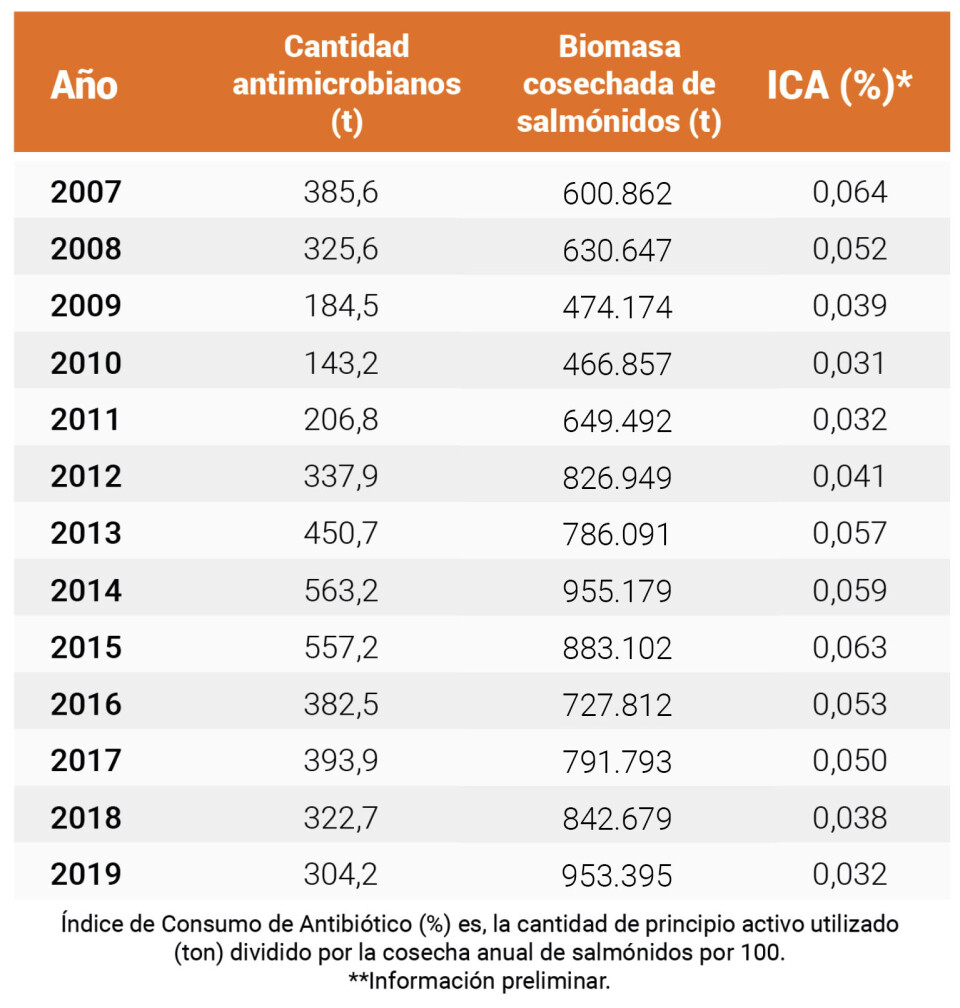
Chilean farmers cut antibiotic use in 2019
Use of antibiotics by Chile’s salmon farming industry fell 6% to 303.2 tonnes last year, according to government aquaculture organisation Sernapesca.
Marcela Lara, deputy director of aquaculture at Sernapesca, revealed the figure during a conference on antibiotic use held in Puerto Varas in the Los Lagos region.
The fall in the amount of antibiotics used, combined with a 13% increase in biomass harvested to 953,395 tonnes, meant the Antibiotic Consumption Index (ICA) decreased from 0.038 in 2018 to 0.032.

Early detection
Lara also highlighted the increase of 10% during 2019 in farms certified as free of antibiotic use and the launch of the fourth edition of the manual of good practices in the use of antibiotics and antiparasitics in Chilean salmon farming.
“Both private sector practices and the monitoring we have carried out as an authority have been improved,” said Lara.
“We have improved the early detection strategy, new health management strategies, better use of vaccines and functional diets have been implemented. This achievement was thanks to a set of actions taken by both companies and the service. In the last five years, we have a total decrease close to 45%.”
Optimising antibiotic use
Lara also presented a new Program for the Optimisation in the use of Antimicrobials in Salmon Farming (PROA / Salmon).
All farms that aspire to be certified as free from the use of antibiotics must register with the PROA.
Chilean farmers use far more antibiotics than those in Scotland or Norway due to the prevalence of diseases such as SRS which have proved difficult to vaccinate against.






















































